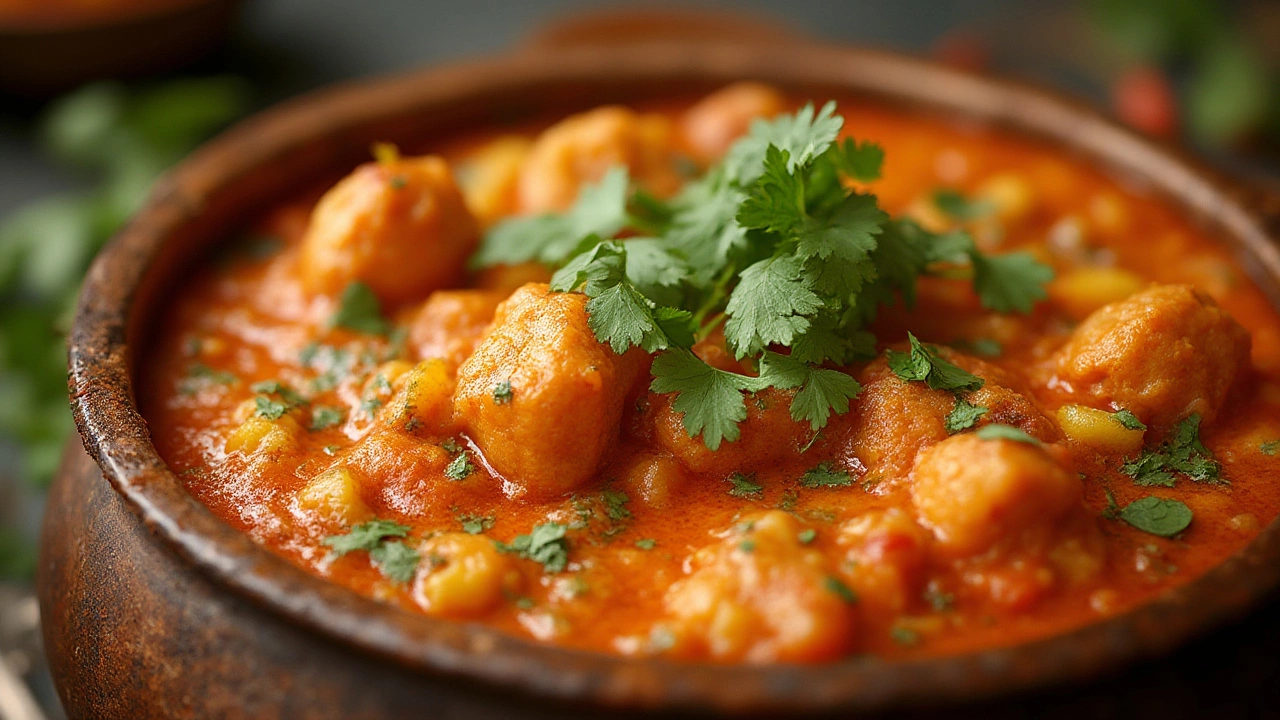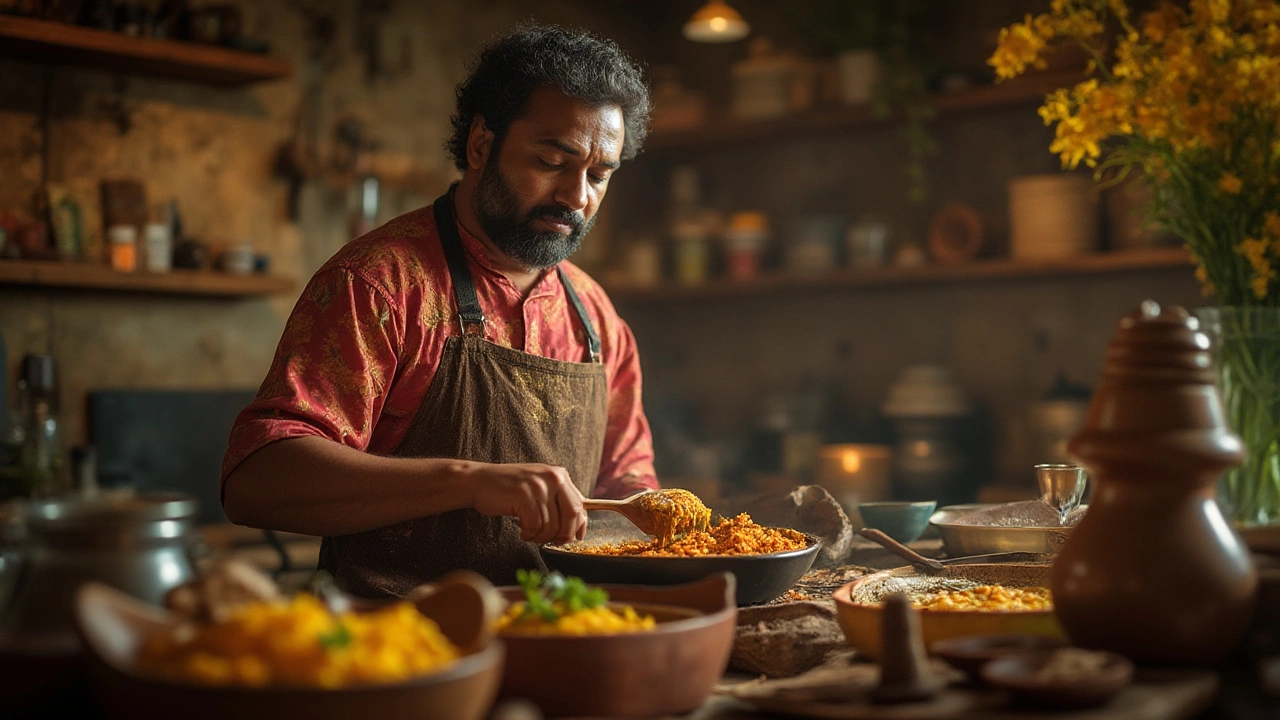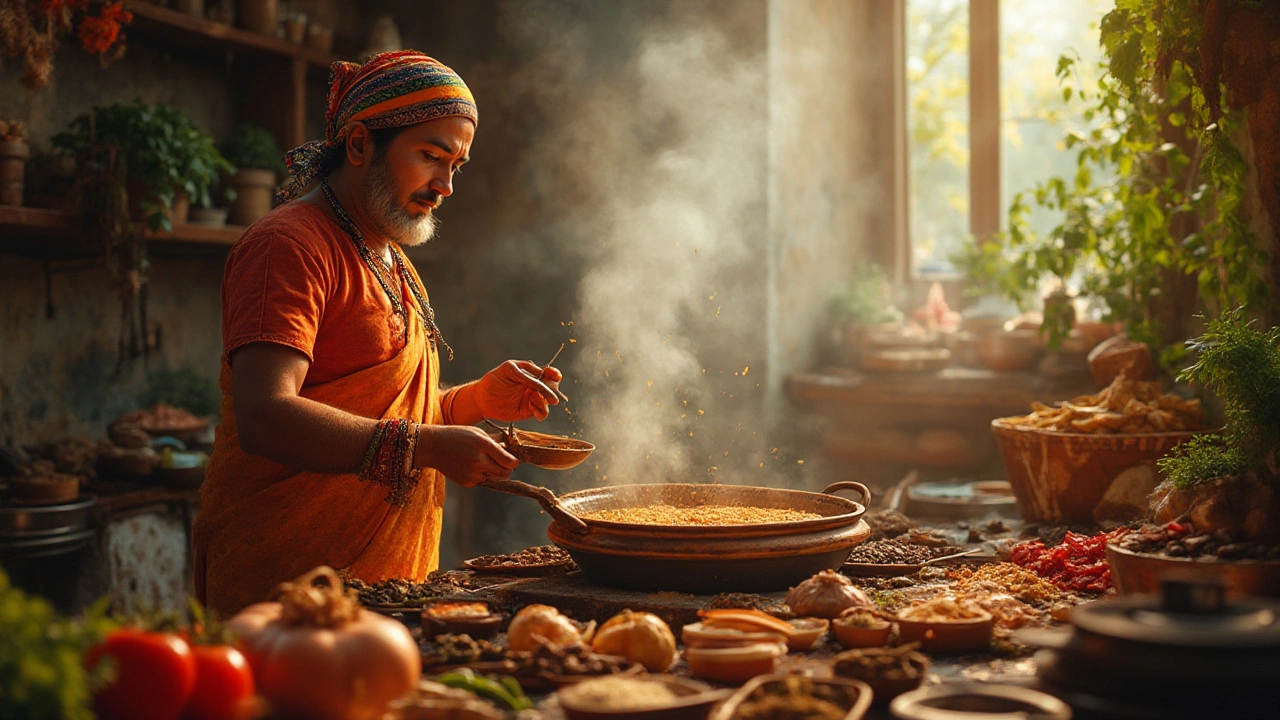Ever noticed how some curries just pop with intense flavor, while others feel flat no matter how many spices you toss in? The answer isn’t just about adding more heat or piling on random powders. Curry, at its best, has a kind of mysterious depth that keeps you coming back for another spoonful. This depth isn’t magic or luck—it’s science, tradition, and a little bit of patience. Once you've tasted a curry with real depth, the memory lingers. The magic happens in home kitchens, not just fancy restaurants, and it’s surprisingly doable if you understand what builds that parade of flavors.
The Science and Art Behind Deeper Curry Flavors
Curry gets its boldness from a wild symphony of ingredients and careful cooking. But let’s face it: Anyone can dump in a pile of turmeric, cumin, and chili powder. Real depth is something else. Begin with the foundation—a combination of alliums, like onions, garlic, and ginger. Cooked low and slow, onions caramelize, bringing sweetness and umami to the dish; garlic and ginger deliver their own punch of flavor that’s unmistakable. Many Indian curries start with this "holy trinity". Try slicing onions thin for even caramelizing; rush it, and you miss the sweetness that sets the stage for all the other spices.
Speaking of spices, it’s not about the total number, but which spices, when, and how they hit the pan. Toasting whole spices in hot oil wakes up their oils, making the flavors bloom. This step, known as "tadka" or "tempering", can elevate a curry from just fine to show-stopping. Each spice brings more than just taste—it adds aroma, color, and even texture. Coriander seeds contribute a citrusy note; black cardamom gives a smoky edge; cinnamon can add warmth. Only freshly ground spices—not the decades-old powder at the back of your cabinet—can unlock the deepest flavors. Just look at how garam masala, used at the end for aroma, is almost always made fresh in Indian households. If you ever get the chance, grind your own batch and compare it with store-bought. It’s night and day.
There’s another big player: fat. Whether it’s ghee, coconut oil, mustard oil, or plain butter, fat helps carry spices through the dish and gives curries their signature silky texture. Don't skimp on it. Try frying your garlic and ginger in the fat first, letting them sizzle to bring out even more complexity. Even when my cat Neko steals butter off my counter, I have to admit the stuff is irresistible, to pets and humans alike.
Liquids and umami also matter. Tomatoes add tang and natural glutamates. Coconut milk brings body. Yogurt adds creaminess and gentle acidity, while tamarind, amchur (dried mango powder), or even a splash of lime juice can wake up the spice mix. For greater depth, chefs often add a handful of fried onions or a dollop of tomato paste—small tweaks, but they matter. Then there’s the subtle touch: a drizzle of honey to tame sourness, or a chunk of jaggery to finish. Deep isn’t just about a flavor bomb of spice; it’s the layering—each note singing in harmony. According to a study in the journal "Nature", the reason curries taste uniquely complex is because they avoid overlapping flavor compounds. Each ingredient has a unique molecular fingerprint, letting each play its part without crowding others.
| Ingredient | Role in Adding Depth | Tips |
|---|---|---|
| Onions | Sweetness, umami | Caramelize slowly |
| Ginger & Garlic | Pungency, warmth | Fry in oil early |
| Whole Spices | Base notes, aroma | Toast/temper first |
| Chilies | Heat, color, depth | Mix fresh + dried |
| Coconut milk/yogurt | Body, tang | Add midway or near end |
| Fat (ghee, oil) | Carries flavors | Don’t skimp |
| Tamarind/amchur | Tanginess | Add to balance |

The Cooking Process: Time, Technique, and Layering
Technique is where things get real. No matter how killer your ingredients are, depth comes from patience and how you layer things together. Rushing a curry is like microwaving a great steak—possible, but kind of criminal. Let each stage shine. Start by sautéing onions long enough that they turn golden—not just soft. This can take 10-30 minutes. Next, add ginger and garlic, giving them a minute to become fragrant but not burnt.
Then, introduce your spices. Oil is your friend here; let the spices meld with fat to develop that base layer. The difference between a deep curry and a one-note stew often comes down to heat management and the order of operations. Ever read those recipes that scream, “Don’t burn your spices or garlic!”? There’s a reason. Burned spices taste bitter, not deep.
Liquids come after—a careful pour of tomatoes, stock, or coconut milk. The simmer matters most here. Low and slow. The flavors need to marry, reduce, and become rich, not rushed. You wouldn’t believe the difference even 20 extra minutes can make. Some curries, like beef rendang or Kerala-style chicken, simmer for hours until the sauce clings to each bite like a hug. Even lentil-based curries, if given patience, reward you with richness you just can’t fake.
Here’s something only true curry fans know: resting your curry after cooking makes a huge difference. Just like lasagna is always better the next day, curry’s layers calm down, meld, and get even deeper after a night in the fridge. My leftovers? Always better for lunch the next day, even when Neko tries to "taste-test" the cooling pot.
Next comes seasoning. Salt is a flavor elevator, but it’s easy to overdo. Season in stages, not just at the end. Taste as you go—seriously, it’s the secret to every pro dish. The smallest tweak (a squeeze of lime, a dash of garam masala) near the end can wake up all the other flavors like a splash of cold water in the morning.
- Sauté onions until golden for deeper sweetness.
- Add garlic and ginger after onions—don’t let them scorch.
- Toast whole and ground spices in oil to activate their flavors.
- Introduce liquids slowly and let simmer until flavors deepen and meld.
- Rest your curry overnight for maximum flavor.
- Taste often and adjust seasoning at every stage.
Some curries, like a Thai Massaman or rich Japanese Kare, even use roasted nuts or dark chocolate for extra body. It sounds odd, but the history of curry is all about mixing the unexpected and seeing what clicks. Different regions tweak their foundation: North Indian curries love creamy bases, while South Indian cooks reach for coconut. Caribbean curries are heavy on allspice and thyme. The depth changes, but the idea stays the same—every ingredient, every technique matters.

Secret Weapons: Ingredients, Traditions, and Modern Tweaks
Sure, there are rules, but curries love rebels. Plenty of home cooks have their own "secret" tools. Some swear by a pinch of asafoetida (hing) for a savory kick, or a splash of fish sauce for umami. In Goa, cooks use vinegar for brightness. Japanese curries add apple for sweetness. Across Trinidad, a "green seasoning" with scallion, thyme, and celery forms the backbone. Turns out depth comes from a mix of tradition, improvisation, and what you happen to have on a given day.
Chefs and home cooks alike lean on their own hacks to boost flavor. Indian grandmas might add a handful of toasted cashews or fried onions on top. Thai families blend lemongrass and kaffir lime for that unmistakable edge. I’ve met Bangladeshi cooks who always finish their curries with fresh coriander stems, not just the leaves, for a green burst that hits your nose first.
Modern kitchens go wild, too. Restaurant chefs now experiment with slow-roasted bones for broth in meaty curries, or swap in umami-rich mushrooms to make plant-based curries that still pack real punch. You can even sneak in a tablespoon of miso paste—it dissolves invisibly, but suddenly your curry has a whole new dimension.
Texture is part of the depth equation. Crispy shallots, a swirl of yogurt, toasted sesame seeds: these add contrast and keep the palate curious with each bite. Even the humble potato, slowly breaking down, thickens and gives body without overshadowing the spices.
One legendary chef, Madhur Jaffrey, emphasizes tasting as you cook and embracing balance. She notes that true depth isn’t loudness, but harmony—a broth where nothing shouts or disappears. If something tastes flat, she suggests acidity—a squeeze of lime or dash of vinegar resets the stage.
- Try a teaspoon of tamarind or mango powder for tang.
- Roast or fry whole spices before grinding for a richer aroma.
- Use bone broths or roasted veg broths for extra umami.
- A splash of coconut cream or yogurt rounds off edges.
- Top with fresh herbs or crispy garnishes for bonus aroma and texture.
Curry’s depth is a moving target, shaped by culture, curiosity, and whatever you find at the market. But the real power? It comes from care, patience, and a willingness to taste—and tweak—until each bite seems to sing. Forget formulas. Start with good ingredients, build flavors in layers, and remember: sometimes the best secrets are the ones passed quietly between cooks, or discovered when your cat distracts you and you accidentally let the onions caramelize to perfection. Yes, Neko, I’m on to you.
